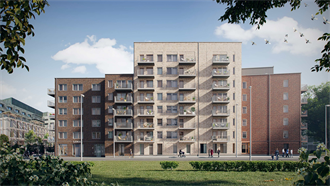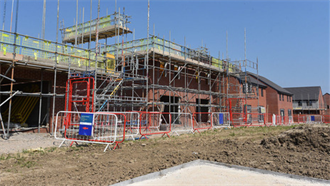A decline in economic sentiment and performance due to the coronavirus pandemic may trigger a restructure of Europe’s retail property sector, already under pressure from the widespread growth of e-commerce, according to a report by the Urban Land Institute (ULI).
Investors in retail know they face a fundamental re-rating of the sector due to the impact of e-commerce but until recently it was still too early in the process for many to execute changes. Operating income was still holding up while low interest rates were also lessening the pressure on retail owners to sell or restructure. At the same time, ongoing retailer failures and falling rents meant owners were not confident about whether levels of rental income from existing schemes would be sustainable, or what volume and type of space were going to be required by retailers going forward.
ULI’s report, which is based on interviews before the Covid-19 outbreak with 24 major investors, outlines a scenario of paralysis in the retail real estate investment market as buyers and sellers failed to agree on pricing. The greatest impact has so far been on the UK due to its relative over-supply of shops, the highest levels of online retailing in Europe and an upward-only rent review system that has led to unsustainable rent levels. However, negative investment sentiment has quickly spread to the Continent, with funders holding back on debt and investors uncertain about the impact that the structural change will have on all markets.
‘The fact that major structural change is affecting retail means it is much more challenging for investors to find their footing in the market. Investors know that with falling rents – or repurposing to other uses – the value of their assets is likely to be re-rated, so it is difficult to make informed decisions about existing assets or future investments at this time. The impact of the coronavirus outbreak on operating income is not yet fully clear, but the pandemic will undoubtedly put further pressure on retail owners and could yet act as the trigger for restructuring,’ said Lisette van Doorn, CEO of ULI Europe.
The report had identified a couple of triggers that may move the market forward from this stasis, and provide more pricing evidence. The transparency of the listed market means public companies are under the greatest pressure and the first movements are already starting to be seen. However, even in this part of the industry, so far only a few sales have materialised despite discounts to net asset value often of more than 50%.
A decline in the broader economic sentiment and performance was identified as a potentially stronger trigger. While operational performance of retail real estate has been sufficient so far to avoid too much distress in the market, the current lockdown and reduced economic and consumer activity in many countries across Europe might lead to a faster decline in retailer performance and consequent further losses for retail property. Once the situation will have become more stable and clear, this could see more properties coming to market and pricing at a level where higher-risk capital would be prepared to invest.
The report shows that fresh capital such as private equity seeking to capitalise on the evolution so far has struggled to find entry points with few pressures on owners to bring assets to the market at low enough prices. One major issue, particularly in the UK, is that private equity players already have significant exposure to retail after investing heavily in 2013 and 2014. At the time, this was a promising recovery play, but with the emergence of these structural shifts they ended up investing in a period that was the cyclical peak for secondary shopping centres.
The report argues that for centres to be resilient in the future they must find affordable and sustainable rental levels to bring about a new status quo. The winners in the resulting restructuring are expected to be experience-led dominant shopping centres and strong neighbourhood schemes focused on convenience shopping. The problems are to come for the “lost middle”: centres that lack the pull of a destination but are too much effort for the local shoppers.
Despite the uncertainty, many owners of struggling centres have been looking at strategies to revitalise existing retail schemes to preserve value as well as more radical repurposing solutions for others. ‘There is no universal solution, but there are effective approaches to be taken on a property-by-property basis. Owners can revitalise stronger locations with food and beverage and leisure uses, or look at repurposing for others,’ said van Doorn.
The full report is available here


































